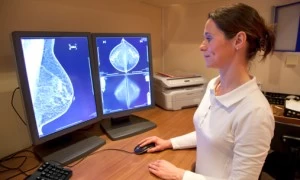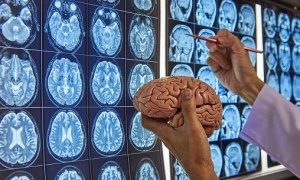Vertebral Artery Stenting
What is vertebral artery stenosis?
The vertebral arteries are a paired arterial system that fuses inside of the head into the basilar artery. These arteries supply the back, bottom part of the brain - specifically, the brainstem and cerebellum. The vertebral arteries originate from the subclavian arteries in the lower neck. As is the case with arteries in other locations of the body, plaque may build up, causing significant narrowing or complete blockage.
What are the symptoms of vertebral artery stenosis?
Symptoms of vertebral artery stenosis may relate to strokes from small clots that have formed on the plaque that have then traveled up into the brain to block a blood vessel. Alternatively, if the affected artery is the dominant vertebral artery, symptoms may be related to inadequate blood flow to the brainstem or cerebellum. Signs and symptoms attributable to this posterior circulation include dizziness, nausea, vomiting, vision changes, or even weakness/changes in sensation. Vertebral artery stenosis may commonly be incidentally found on imaging studies for other reasons and be entirely asymptomatic.
How is vertebral artery stenosis diagnosed?
Vertebral artery stenosis is generally diagnosed on a CT or MRI scan assessing the blood vessels (CTA/MRA). These studies generally show tight narrowing of the vertebral artery origin at the subclavian artery associated with atherosclerotic plaque. The stenosis may be defined in greater detail with a dedicated diagnostic catheter angiogram.
How is vertebral artery stenosis treated?
Vertebral artery stenosis is generally treated initially medically with antiplatelet medications to thin the blood and mitigate the risk of future events by protecting against clot formation. However, in instances in which the stenosis is severe and symptoms or strokes are recurrent despite optimized medical therapy, endovascular treatment may be warranted. This typically consists of placing a balloon-mounted stent to prop open the narrowing, restoring blood flow, and covering the plaque. There is a known significant rate of recurrent narrowing despite stent placement. Stents are designed to elute certain medications that mitigate this risk. However, a small balloon may need to be inflated to restore the normal caliber of the blood vessel.















































































